eLife episode 25: Sleep and Reward Boost Recall
In this episode of the eLife podcast we hear about deep-sea bacteria, cigarette smoke and lung disease, antibiotic resistance, unconscious perception, and the benefits of sleep.
In this episode
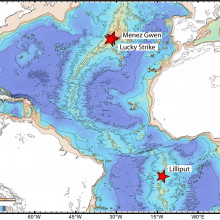
00:33 - Mussel bacterial symbiosis
Mussel bacterial symbiosis
with Jillian Petersen, University of Vienna
Jillian Petersen, from the University of Vienna, has been looking at how mussels 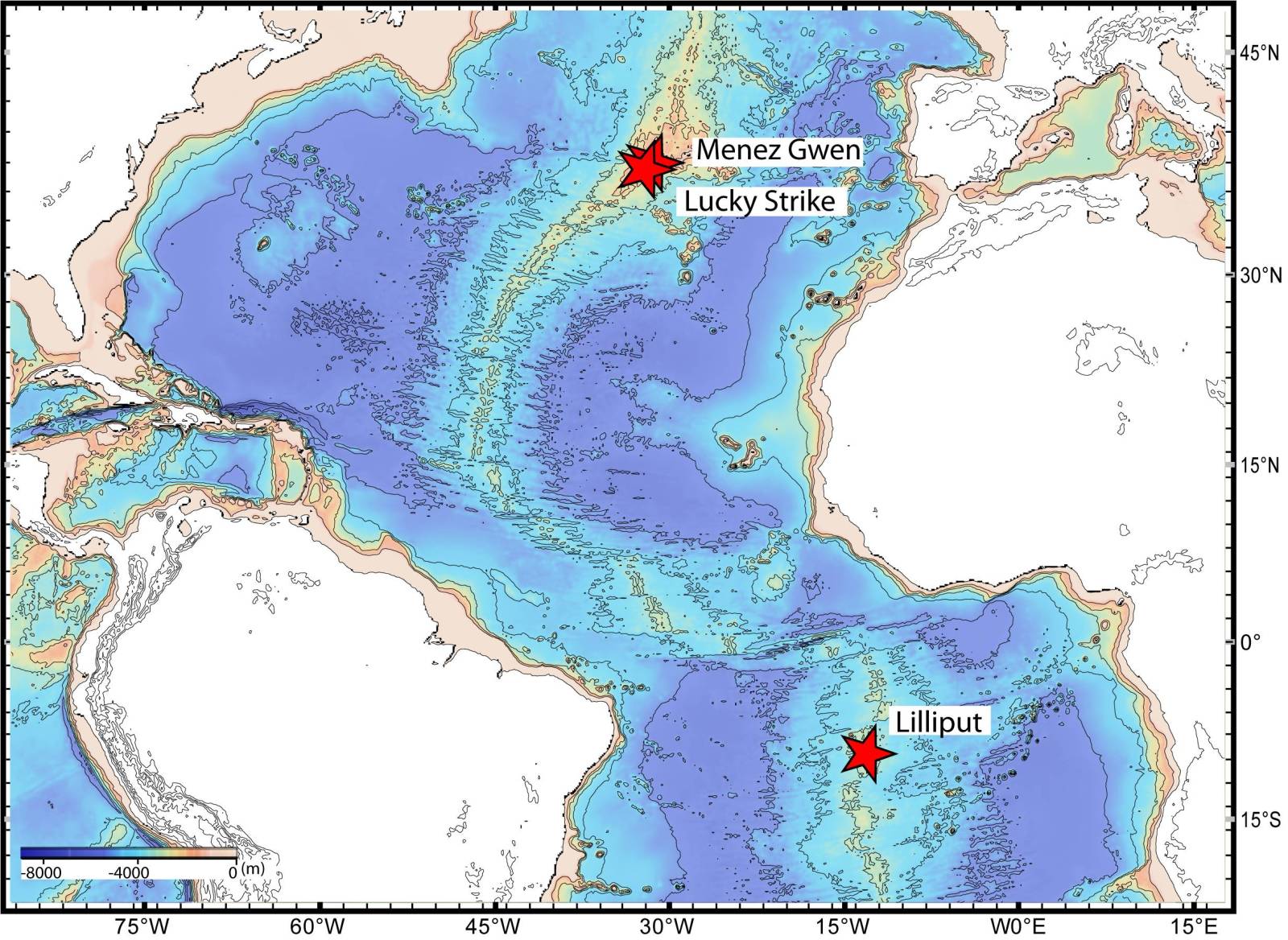 team up with microbes that feed them. Genetically, these bacteria are endowed with a hefty arsenal of toxins, which they might use to defend their mussel hosts, or just to start a chemical conversation with them. She spoke to Chris Smith about the research...
team up with microbes that feed them. Genetically, these bacteria are endowed with a hefty arsenal of toxins, which they might use to defend their mussel hosts, or just to start a chemical conversation with them. She spoke to Chris Smith about the research...
Jillian - These mussels are found all around the world in the deep sea, at oases of life of hydrothermal vents. They are the most dominant animals found at hydrothermal vents, and they are able to live there because they associate very intimately with a certain type of bacteria. Now the deep sea is known to very nutrient poor, there is very food in the deep sea for animals, but it's not true that the whole deep sea is completely devoid of food. In fact, you may have heard of hydrothermal vents, you may have even seen the images of these impressive black smokers, fluids that look like black smoke pouring out of a chimney. In fact, it's pouring out of the sea floor. This black smoke is composed of a toxic chemical mix of things like hydrogen sulphide and methane, and this is actually an excellent food source for bacteria. The only way that animals can live in these extreme environments is by teaming up with bacteria that use these chemicals to power primary production, and through this chemosynthetic primary production they can feed their hosts.
Chris - Where do the bacteria live in the host? Do the bacteria live outside the host and the host eat the bacteria or is the relationship more intimate?
Jillian - This is an extremely intimate symbiosis. The bacteria live inside of cells of the animal and they are hosted in an organ called the gills, and this is usually the organ marine animals use to breath underwater. But in this case the organ has become much larger because it's housing an enormous population of symbiotic bacteria.
Chris - Are these bacteria only found at these hydrothermal vents or do they have a lot of factors in common with bugs that we would find elsewhere all over earth?
Jillian - We were trying to understand more about these symbiotic bacteria, so we did some genome sequencing and when we compared the deep sea symbiotic bacteria to all other known bacteria, let's say pathogens or environmental bacteria, we were surprised to find that they very much resemble pathogenic bacteria that are known to cause disease in humans. For example they encode an enormous number of toxin-like genes in their genomes and this was unexpected because we know that these bacteria are beneficial for their hosts.
Chris - Where do they come from then, these micro-organisms? Did they start life as pathogens and have found their way into the deep sea or, do you think the equation worked in the opposite direction?
Jillian - For a long time, researchers thought that symbioses may have evolved from pathogenic interactions: that first interaction was was a pathogen, but over time they learned to live in cooperation with their hosts, and eventually might have become beneficial. But our study, and many others of symbiotic bacteria, have shown that these beneficial bacteria actually far outnumber the pathogenic bacteria on our planet, and even on and in our own bodies. So it may be that pathogenesis is the exception and these bacteria first evolved to help us, and in very rare cases they actually harm us.
Chris - How do the toxins that you've found in these symbionts work? What are they doing in the context of the mussels that they associate with?
Jillian - The way that we look at this is to compare them to genes or proteins that are very similar, where the toxic activity has actually been shown in laboratory studies. Many similar toxins have been shown to mediate communication between animals and bacteria, ours may have a similar function. We know that bacteria need to be recognised by the host. There are millions of species of bacteria in their environments, and yet they can recognise their own symbiont out of this myriad of environmental bacteria; and then the bacteria need to invade the host cells. There needs to be mechanisms of recognition and communication where a symbiont says "Hi, here I am," and a host says "I recognise you, you're a friend, please come in." Another role that these toxins might have is to protect the symbiosis, so to protect the host from its natural enemies and this is something that has been overlooked. There have only been a couple of studies investigating pathogenesis or parasites in the deep sea. These deep sea mussel beds can be up to five times as dense as the mussel beds you would find in coastal regions and this is the perfect oasis for a parasitic organism. There is very little known about how they manage do defend themselves, and that's our second hypothesis that some these toxins might be involved in defending the host against parasites. This came up because we noticed one particular species of mussel that has, over evolution, lost the symbiont that encodes the toxins, and this particular mussel species is very heavily infected by a parasite, a trematode parasite, that infects the gonads and eats all the reproductive tissue of the mussel. It's a pretty nasty parasite. So this is what we call a defensive symbiosis, that the symbiont may be able to defend the host against a common enemy.
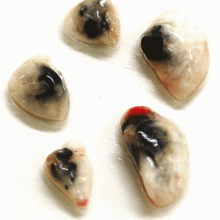
06:07 - How carbon alone causes lung disease
How carbon alone causes lung disease
with Farrah Kheradmand, Baylor College, Texas
Thanks to decades of effort, Richard Doll and his colleagues proved that smoking is bad for your chest. In fact, the lungs of very heavy smokers become stained black or brown with carbon deposits. But no one knew whether this was a cause, or just a consequence of various smoking-related conditions like emphysema or chronic obstructive pulmonary disease where sufferers find it progressively more difficult to breathe. Now Farrah Kheradmand, at Baylor College in Texas, has discovered what that brown pigment is. By exposing mice to a pure form of it, she can trigger lung disease identical in many ways to that suffered by smokers and coal miners. And it looks like a major culprit in chest disease is just carbon...
Farrah - The story began when a graduate student in my lab isolates a particular cell type from the lungs of humans who've smoked. That particular cell just appears to be dark in colour and repeatedly he came to my office and showed me these cells, and repeatedly I very much explained that this is what's been explained in pathology text books, that smokers collect dark material within their lung. So his next question for me "what was the origin of this dark material" and I referred him to pathology text books that describe this as anthracotic particles, the nature of which was rather elusive and so he went on to disintegrate the cells, the result of which ended up being a very fine material that really wasn't visible by naked eye. That's when we contacted our colleagues over at Rice University, they decided to give the composition a try. Try to understand what the chemical nature of this dark material was.
Chris - So what was that dark material? When you look in those cells, the stuff that's staining them black, what is it?
Farrah - When I got a phone call back from our colleagues at Rice University, their first question was "where did you get these fine particles of 15 nanometre?" which is 15 billionth of a metre. Very small particles that are pure elemental carbon black.
Chris - So how did you then tie the presence of these particles in the lung to the disease process because they could just be there as an innocent bystander? The fact that they are in the smoke that the person breathes in doesn't mean necessarily they are connected to the disease process, does it?
Farrah - The connection with the disease process was the particular cell types that these nano-carbon black particles collect in. In fact, if you take the same cells isolated from the lungs of mice that have been exposed to cigarette smoke, and transfer these cells to naive mice, meaning mice that have never seen cigarette smoke in their lives. A similar pathology starts happening in their lungs, meaning that there's quite a bit of inflammation and changes that are consistent with a smoker's lung is now shown in the mice that have never seen cigarettes. Therefore, for the first time, it connected a particular cell to disease formation
Chris - How do you think those - literally just little particles of carbon - are causing the disease then? What are they doing to the cells that they end up in that leads to that disease both perpetuating in one animal, but also the ability to transmit that disease to another?
Farrah - When nano elemental carbon black accumulates in these cells, these cells become activated to try to undo the damage, meaning they are now encountering a danger signal that they are trying to alleviate, and therefore they turn on a whole programme of genes that we have identified, some of which are important in DNA repair damage for instance. When they turn these genes on the result of which results in an activated cell that then can direct the cells of your immune cells, cells that are normally there to protect you against foreign invasion or dangers, that can result in inflammation in the lung.
Chris - How do you know that it's the carbon particles that are doing that per se and not, for instance, something stuck to the carbon particle, because when they come into the body they are going to be laden with other hydrocarbons and other materials from the burning cigarette or whatever other forms of pollution you have been encountering, aren't they?
Farrah - This is an experimental model where we had access to highly purified elemental carbon black that was devoid of any material that could have possibly been attached to it, and were all experimentals that were performed in my laboratory used particularly a form of the elemental carbon black that is 99.99 percent pure
Chris - It seems very surprising that given the ubiquity of fine particles of carbon in the environment that the lung hasn't evolved a way not to respond like this to clean itself out. Why do you think that's the case?
Farrah - Well, in fact the lung does clean itself out, for the most part, and this is perhaps the reason why we find these heavy stained dark material only in the lungs of heavy smokers. It's a matter of the amount of material the lung can handle.
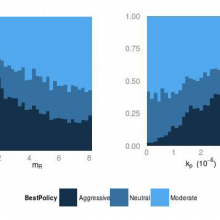
12:11 - Best antibacterial treatment strategies
Best antibacterial treatment strategies
with Caroline Colijn, Imperial College London
The UK's chief medical officer Dame Sally Davies has ranked the threat posed by antibiotic resistance as on par with terrorism. A number of strategies have been put forward to combat the problem, but one area being debated is whether to hit bugs really hard in one fell swoop, or to take a more gentle approach. Now a mathematical model developed by Imperial College scientist Caroline Colijn suggests that both strategies have their place, but you need to use them under the right circumstances, as she explained to Graihagh Jackson...
Caroline - So it's long been thought that hard and fast approach to treating with strong antibiotics will be best at preventing the emergence of drug resistance within individuals, and there's also an opposing or competing view to that that of course when you treat very strongly, you also very efficiently select for any resistant organisms that might be present initially or that might arise during that treatment. So there have been two recent bodies of literature, one arguing for a hit hard and fast, treat really strongly with a strong dose of antibiotics, and the other arguing for a more moderate approach to using the least possible amount of antibiotics that will cure the infection.
Graihagh - And your paper is looking at these two strategies and seeing which is best within a mathematical model. How did you go about that?
Caroline - So we used two models. We used a model for the bacterial infection inside one individual and we studied how two strains, a resistant strain and a sensitive strain might interact and how that might play out under different strengths of treatment. Then we did the same thing at a community level where you imagine a drug sensitive strain and a drug resistance strain circulating amongst individuals and we look at whether really strong treatment or more moderate treatment, which one of those will drive more increases in resistance.
Graihagh - What did your model show?
Caroline - So we found that both of these two opposing views can really be right under very sensible assumptions in models. So it can be the case that it's really best to do the hard and fast treatment, but it can equally well be the case that it's really best, in terms of minimising resistance to take a more moderate approach to how much treatment to give. We found that the key factor that determines which of those is right, is how effectively the two strains are actually competing with each other.
Graihagh - Competing, what do you mean?
Caroline - So, two strains would be competing if suppressing one of them paves the way for, provides additional resources for, or in some way helps the other one. If the strains are just spreading independently and they are not related to each other in terms of how many you have of one and how many you have of other, then that's a very different scenario in terms of whether treatment drives resistance than if the two strains are depending on the same resources and are really in strong, active competition with each other.
Graihagh - So competition is the key thing here?
Caroline - That's right. We found that when the resistant strain was a fit and strong competitor to the sensitive strain, in order to minimise resistance, it's best to do a more moderate approach to treatment. Whereas when that resistant strain can be assumed not to be a very fit competitor either because it just doesn't grow very well or because it faces a really strong immune system that's really effective at suppressing it, then the more aggressive approach is great because it more rapidly supresses the sensitive bugs and they are most of the problem and they don't have a fit competitor.
Graihagh - This is all in a mathematical model, so I wonder what the limitations of this might be. Is this something that you have seen within the real world in vivo?
Caroline - Well I think we have certainly seen rising resistance at population levels, so you can track the emergence of resistance with a short leg behind the introduction of new antibiotics. So we know that using antibiotics is driving resistance on long terms at the population level and those are regimes where it's actually very hard to empirically experiment. So I think there's a real role for mathematical models to play in uncovering fundamental mechanisms and looking at what's important in driving these effects in a way that maybe help us to guide empirical studies to understand these interactions.
Graihagh - I suppose in an ideal world you would be able to test this sort of competition within individuals to determine what sort of treatment might be best, but I suppose that's not something that's already on the cards just yet?
Caroline - Right, I think it would be really important to get much better understanding of the kinds of strain diversities that we have in human infections in lots of different pathogens and also not just a picture of that diversity as a single snapshot, but to really develop an understanding of how strains are interacting within hosts and also in communities of individuals, and I think there are some real challenges to that. I think there is a growing awareness that resistant strains are increasing in fitness and we need to start thinking about these possible competitive interactions between resistant and sensitive strains.
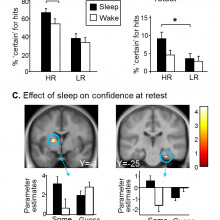
17:44 - Sleep on it!
Sleep on it!
with Kinga Igloi, University of Geneva
If you want to learn something really well, the advice has always been to "sleep 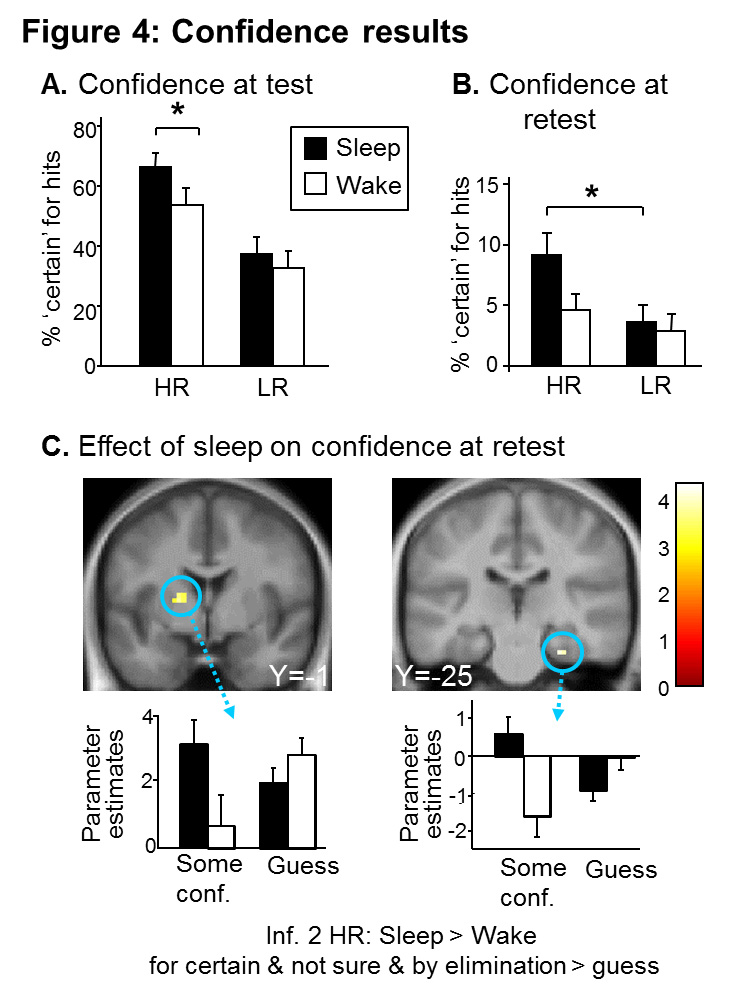 on it". But, according to University of Geneva scientist Kinga Igloi, it looks like you also need to really value what you want to learn to get the most out of the effect, as he explained to Chris Smith...
on it". But, according to University of Geneva scientist Kinga Igloi, it looks like you also need to really value what you want to learn to get the most out of the effect, as he explained to Chris Smith...
Kinga - We knew sleep had an effect on memory consolidation but we did not know how reward and sleep interact, whether there is a selective effect of reward. We might have thought of it because we generally remember rewarding things better, like for example, the great party you had when you were a child, but it had never been tested how this works in the brain.
Chris - I suppose the evolutionary purpose of this is to prioritise the retention of information that in some way is likely to benefit an individual in the future?
Kinga - Yes, it is. In evolution, we will try to remember things that are important, that we will need for our survival, or for a successful life. So that is why we thought that rewards may help memory consolidation.
Chris - Tell us about the study design. What did you actually do in order to probe that?
Kinga - So we make people come in early afternoon and learn pairs of pictures, preceded by a dollar coin or a cent coin, and we tell them that the dollar coin items will yield higher reward at the end of the study, so that they will be paid more if they remember the highly rewarded items better.
Chris - And where does the sleep come into it?
Kinga - So after they have learnt it, half of the participants take a nap and the other half stay awake. During sleep, we monitor their sleep using EEG, which is electroencephalography.
Chris - And then having established that the person slept and what their brain activity is when they sleep or when they remain awake. You then present them with those cards again and see how good they are at remembering the pairings you asked them to learn earlier.
Kinga - Yes, we show them the same pairs and so we test their memory.
Chris - Right, well let's look at the sleep first. Did the sleep improve retention of those memories?
Kinga - Yes, it did. We had an overall affect of sleep, so sleep improved retention.
Chris - And then if you look at the value attached, was there a difference there too?
Kinga - There is a difference between subjects who slept and subjects who stayed awake straight after, and there is also a difference between highly rewarded items and lowly rewarded items. Subjects, remember highly rewarded items better.
Chris - And even better again if they sleep?
Kinga - Yes. Then here we have to be clear, at the test point, so straight after sleep we do not have an interaction effect. So, at test there is only straight effect of sleep, so the subject who slept remember items better, and highly rewarded items are remembered better than lowly rewarded items.
Chris - Is this just a short term effect? Is this something which is manifest only on that day you test them in the laboratory or if you pull people back days, weeks, months later, do you still see a preserved benefit through having had that sleep plus the high reward versus low reward situation?
Kinga - Yes, it is important to stress that we made people come back three months later, so a long time later, and we retested them on their memories and there was still an important effect of reward, and selectively for the group who slept
Chris - Putting this together then, how do you think this is working and what did you see when you look at the brain activity? Does that give you any clues as to what the sleep is doing to make this effect manifest?
Kinga - Yes. What we find is that there is an effect of sleep and of reward, so that you remember highly rewarded items better and we have linked that in the brain to an activation of the hippocampus. So we find higher activation in the hippocampus for highly rewarded items compared to lowly rewarded items for the subjects who slept versus compared to the subject who stayed awake.
Chris - So, if you want to learn something really well, you need to convince yourself that knowing it is extremely valuable to you and then sleep on it.
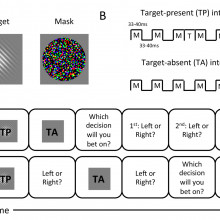
Now you see it...
with Megan Peters, University of California Los Angeles
Can information sneak into our brains unconsciously and influence our decisions  without us being aware of it? Previous studies had speculated that there are two different thresholds: some stimuli we are immediately consciously aware of; others, might bias thinking without us knowing why. But it turns out this is just wishful thinking, as Megan Peters explained to Chris Smith...
without us being aware of it? Previous studies had speculated that there are two different thresholds: some stimuli we are immediately consciously aware of; others, might bias thinking without us knowing why. But it turns out this is just wishful thinking, as Megan Peters explained to Chris Smith...
Megan - For researchers studying consciousness and conscious perception, we want to be able to separate how well you can do on a task from your ability to consciously see things that the task is asking you to do. The problem with this is that many times, when you make something on a computer screen so dim that you can't actually consciously see it, you also remove the ability to completely do the task at all, and so it takes a careful experimental design to create a stimulus that you cannot see but that you might still be able to do some tasks with. Because then, we can separate your ability to do some task from the conscious experience of that task, and that allows us to do things like neuro-imaging studies or brain scans where you can say, okay well we held task performance the same, you can do the task just as well but you say you are not conscious of it. So then we go and look for what makes something conscious or not.
Chris - There are, therefore, different thresholds. There's a threshold at which you are consciously aware of something and a threshold at which your brain, nonetheless, knows it's there.
Megan - That's the theory, but what we are showing here with this study is that those two thresholds are actually one and the same. In this type of context there isn't a threshold between when your brain becomes aware of something and when you consciously become aware of something, and this is very surprising and flies in the face of a large amount of research that's been done up until this point.
Chris - Very, very tricky to unpick that. How did you manage to prise apart those two and prove they are effectively one and the same?
Megan - The previous way of doing this type of research was to show someone a stimulus on a computer screen, or have them listen to a sound stimulus and have them do some task and then report "did you see it or not?" or "how sure are you that the answer that you just gave was correct?" But there's a really bit problems with this, which is just because I tell you that I don't see the thing on the screen, doesn't mean I actually didn't see it all. Maybe it was just slightly dimmer than whatever I count as a threshold for reporting that I saw it. We wanted to get around this threshold problem by designing a task where you do two judgements to two different stimuli and then you indicate which of the two judgements you are more confident about. So this way it doesn't matter whether I am very confident overall or not very confident overall, I still have to choose one. One to say I'm more confident about this decision than the other
Chris - Because one act's as its own control in that way, doesn't it? You're comparing one against the other so they are literally cancelling the noise in both, which is very elegant.
Megan - That's the goal, and the slightly clever thing that we did with this type of tasks is we had participants again make two judgements about two different stimuli, but one of the stimuli actually wasn't even there. So we showed them this stimulus on the screen as a grey and white stripy patch, and it's very brief, and it's masked by other colourful images that flash before and after it, and the task is to say, are the stripes tilted to the left or the right of vertical and then we show you another patch, and we ask you to do the same task, left or right of vertical. But this time we turn the brightness, the contrast down all the way to zero, so there's actually nothing there on the screen, and then we say, which of these two decisions are you more confident in, and if you can do the task where you report left or right, better than you would if you were just totally guessing, but then you can't tell us which one you're more confident in, then you really can't tell the difference being able to do the task and being able to just guess randomly at nothing there on the screen. So in this way you have no introspective access to the information that contributed to your decision about that stimulus and so in this way we would say, okay if that occurs, that is unconscious perception and it turns out it doesn't exist at all.




Comments
Add a comment